Table of Contents




Queen of the night tulip & red flower
The Queen of the Night tulip is a captivating variety famed for its velvety, near-black blooms that shimmer with deep maroon undertones under sunlight. While not a true red flower, its dramatic hue—achieved through intense pigmentation—creates an illusion of darkness that contrasts strikingly with traditional red flowers in gardens or arrangements. These cup-shaped blossoms, part of the Single Late Group, stand 18-24 inches tall and bloom in late spring, their color deepening to a rich, almost mystical shade in full sun. Ideal for moonlit landscapes or Gothic-themed designs, this tulip adds unparalleled sophistication.
Symbolically, the Queen of the Night embodies power, mystery, and unconventional love. Its dark petals evoke resilience and rebirth, while historically linking it to royalty and rarity. Though it defies classic red flower symbolism tied to passion, gifting it whispers, “Your uniqueness enthralls me.”
Fun fact: No tulip is truly black—this variety’s “darkness” comes from concentrated pigments. Pair it with white blooms or bold red flowers like roses for jaw-dropping contrast. Thriving in USDA zones 3-8, it’s a timeless choice for gardeners craving drama.



Red freesia
A standout among flowering plants, the red freesia boasts trumpet-shaped blossoms that cascade in elegant, arching clusters along slender stems. Its petals dazzle in vivid crimson, often blending into gradients of pink or orange, radiating warmth akin to a fiery sunset. What truly sets this red flower apart is its intoxicating sweet fragrance—a hypnotic mix of citrus zest and honeyed warmth—making it a star in perfumes and aromatic bouquets. Reaching 12-18 inches tall, it thrives in well-drained soil under sun or partial shade. Native to South Africa, it bursts into bloom from late winter to early spring, heralding seasonal renewal with vibrant life.
Symbolically, red freesia merges boldness with tenderness. Its scarlet hue screams passion, courage, and deep love, while its soothing scent whispers trust and purity. Together, it embodies “fiery devotion rooted in sincerity.” Gift it to celebrate someone’s fearless spirit or to say, “My love for you burns bright and eternal.” Its resilience—reblooming yearly with vigor—adds a layer of enduring hope.
Did you know? Red freesia petals are edible! Their subtle sweetness and vivid color jazz up desserts or cocktails. Even better, studies show their aroma reduces stress—ideal for creating a zen garden oasis.
Perfect for romantic bouquets or indoor cheer, red freesias flourish in USDA zones 9-10 but adapt happily to pots anywhere.




Red ranunculus
The red ranunculus is a show-stopping red flower celebrated for its lush, multi-layered blooms that resemble delicate crepe paper or a miniature peony. Its petals range from vivid scarlet to deep, velvety crimson, often with a subtle gradient that adds depth and drama. Each blossom can span 3-6 inches wide, perched atop slender stems reaching 12-24 inches tall. Native to Mediterranean regions, this cool-season plant thrives in mild climates (USDA zones 8-11) and blooms profusely in early spring. Unlike many flowers, the red ranunculus retains its striking color even in partial shade, making it a versatile choice for gardens and floral arrangements.
As a red flower, the ranunculus carries bold symbolism tied to passion, allure, and magnetic charm. Its intricate layers symbolize radiant confidence and luxurious love, often interpreted as, “You enchant me utterly.” In floriography, it’s also linked to prosperity and resilience, reflecting its ability to thrive in challenging conditions. Pairing its fiery hue with its delicate form, the red ranunculus embodies a paradox: “strength cloaked in beauty.” Gifting this bloom can signal romantic desire, admiration for someone’s grace under pressure, or celebration of a new beginning.
Ranunculus tubers resemble tiny claws (the name comes from rana, Latin for “frog,” referencing its wetland origins). Despite its fragile look, this red flower is drought-tolerant once established! It’s also a favorite for bridal bouquets, symbolizing a love that grows more captivating over time.

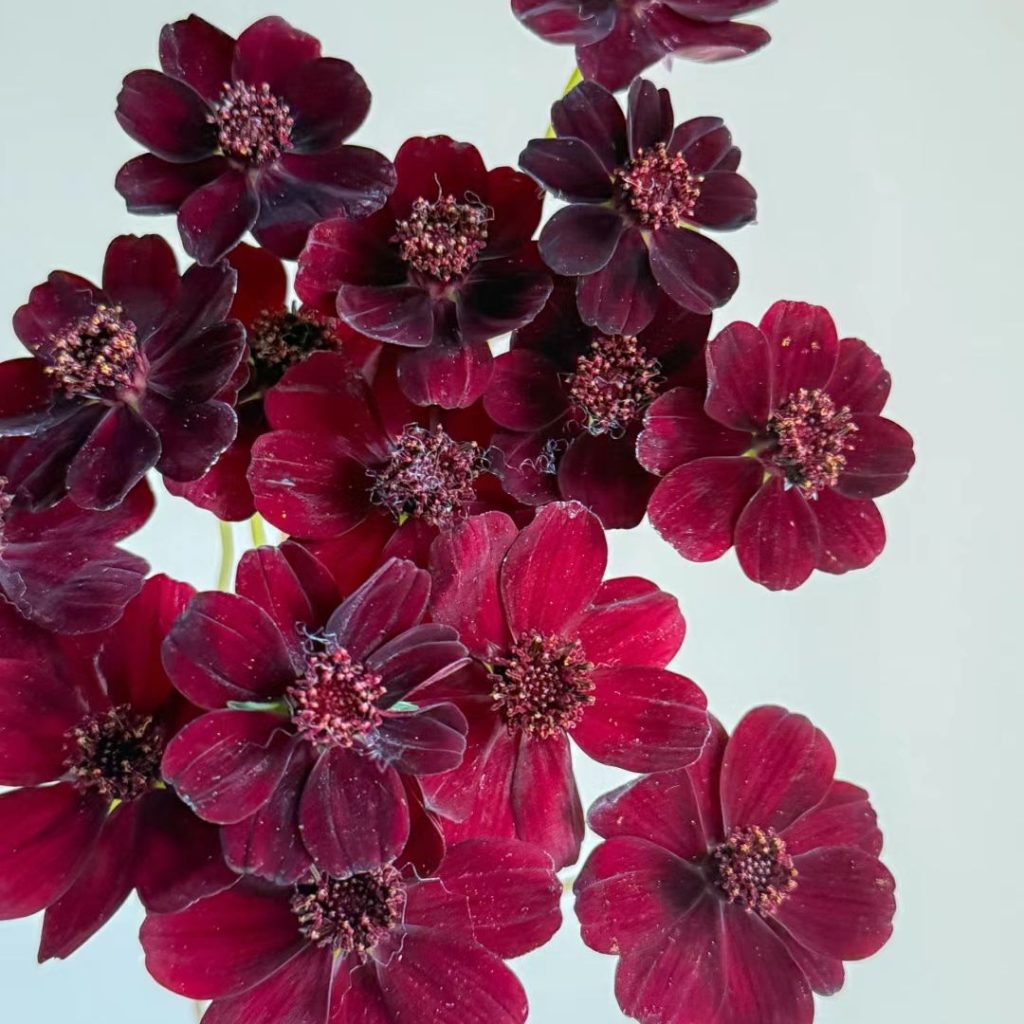
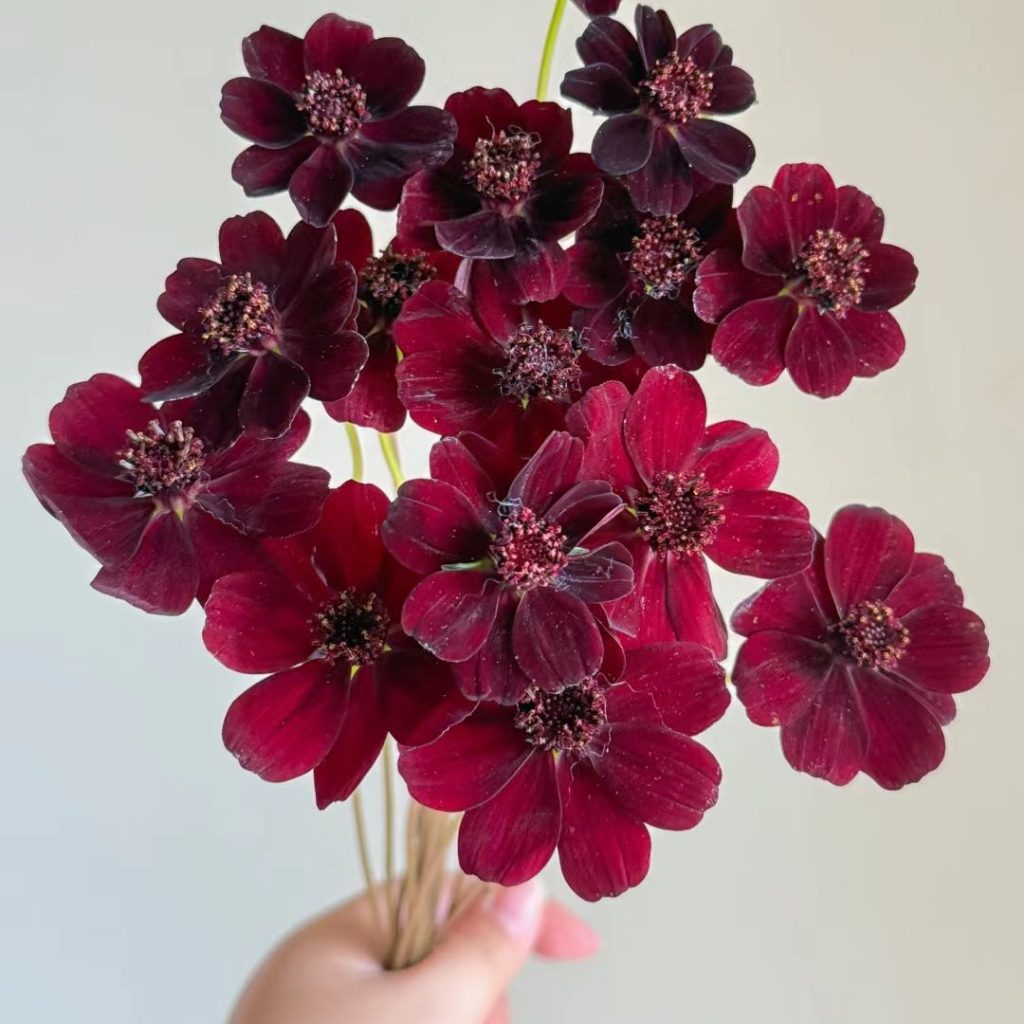
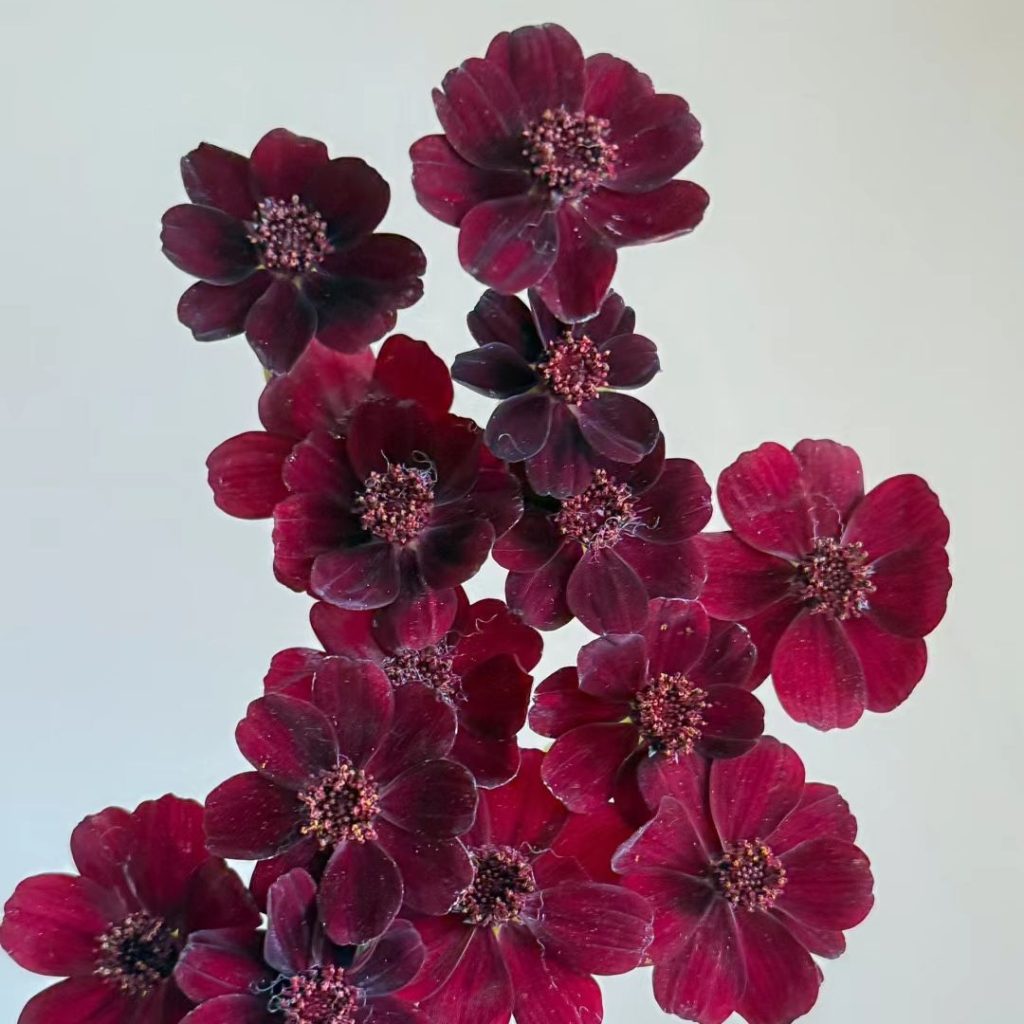
Deep Red Cosmos: The Fiery Red Flower of Autumn’s Drama
The deep red cosmos (Cosmos bipinnatus) is a showstopping red flower known for its velvety, wine-colored petals that radiate warmth against slender, feathery green foliage. Each bloom resembles a bold daisy, with slightly ruffled petals surrounding a golden-brown center. Reaching 3-4 inches wide, these flowers grow on tall, airy stems (up to 4-6 feet tall), creating a striking vertical accent in gardens. Native to Mexico, this sun-loving annual thrives in poor soil and blooms from midsummer to frost, making it a drought-tolerant favorite for autumn landscapes. Its deep crimson shade intensifies in full sun, attracting pollinators like bees and butterflies.
As a red flower, the deep red cosmos symbolizes wild passion, transformative love, and courage. In floriography, it’s tied to themes of embracing change and celebrating life’s fleeting beauty—perfect for autumn’s transitional energy. Its fiery hue also represents resilience, as it blooms vibrantly even as temperatures drop. Gifting this flower might say, “My heart burns for you,” or honor someone’s bold spirit. Pair it with orange marigolds or golden sunflowers for a harvest-themed message of abundance and joy.
Cosmos flowers close at night and reopen at dawn, earning them the nickname “day’s eye” in some cultures! While not edible, their seeds are a winter snack for birds, adding ecological value to their beauty.
Ideal for cottage gardens or wildflower meadows, this red flower thrives in USDA zones 2-11 and self-seeds freely, ensuring a fiery return year after year.
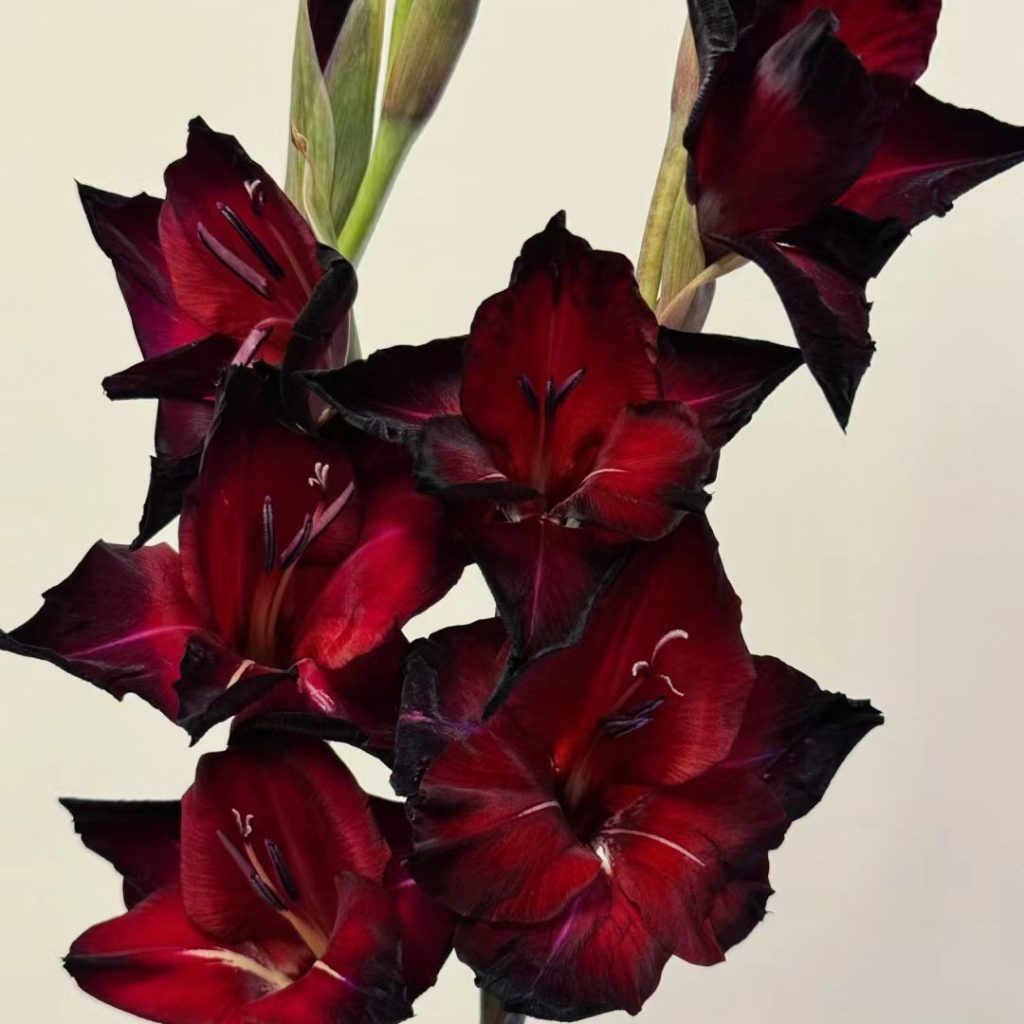
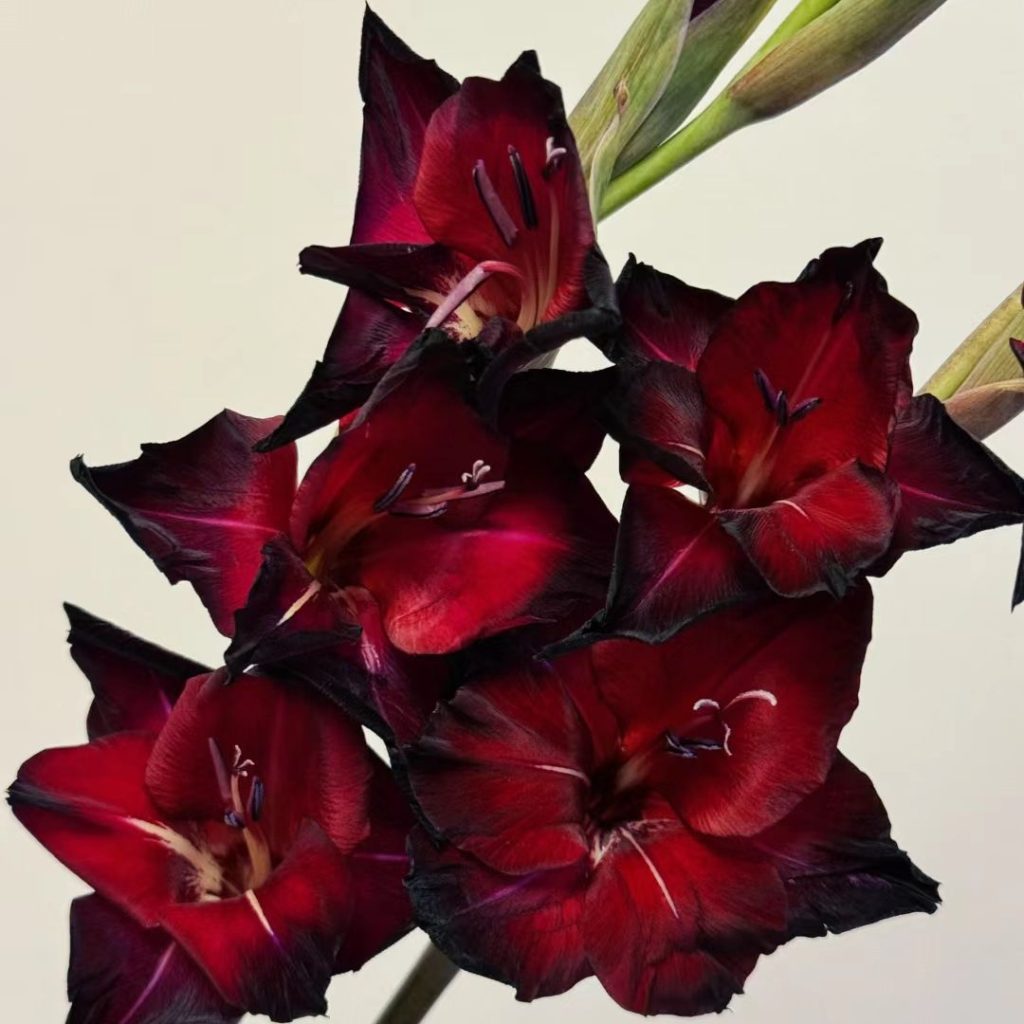
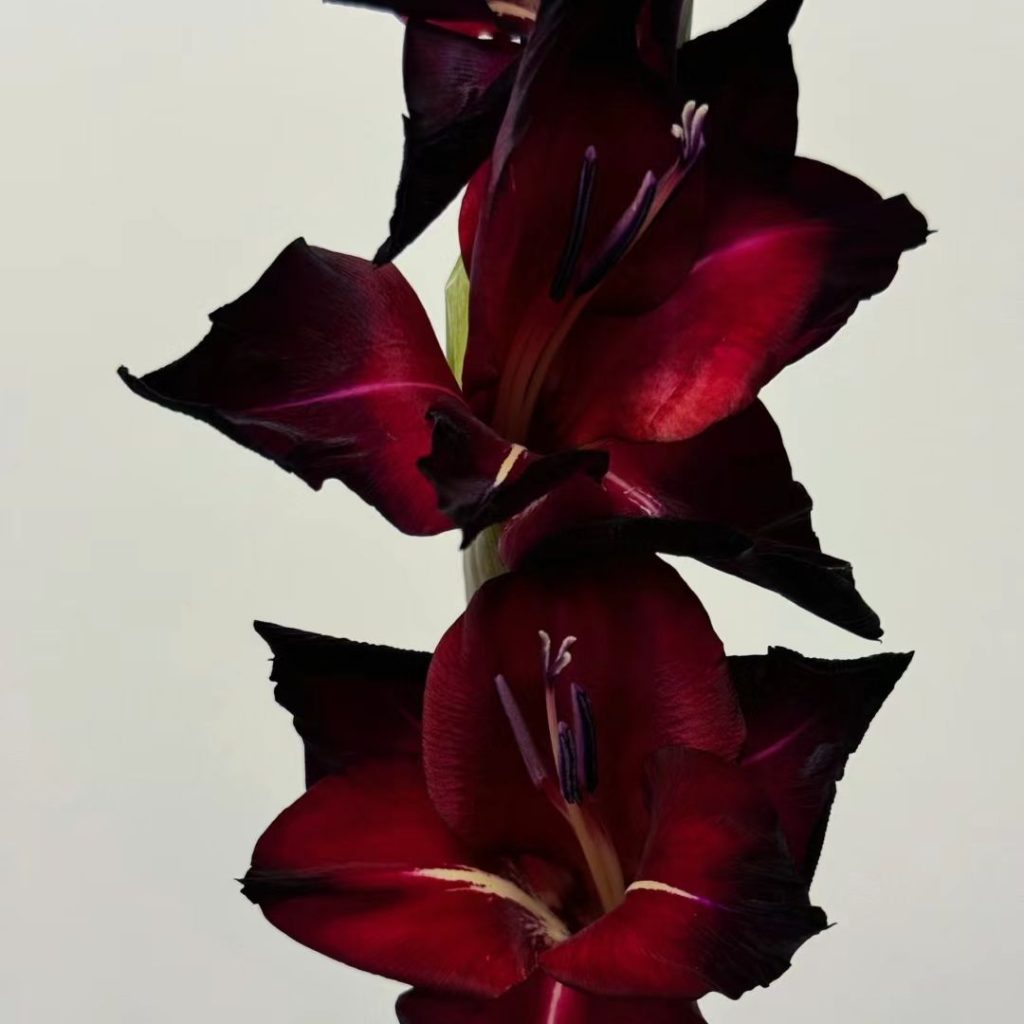

Deep Red Gladiolus: The Bold Red Flower of Strength and Passion
The deep red gladiolus, often called the “sword lily,” stuns with its towering spikes of velvety crimson blooms. Each flower stem rises 3-5 feet tall, lined with 8-12 funnel-shaped blossoms that open sequentially from bottom to top. Its sword-like foliage adds architectural drama, while the rich red hue—ranging from blood-red to burgundy—pops against gardens or bouquets. Native to Africa and Mediterranean regions, this summer-blooming red flower thrives in full sun and well-drained soil, making it a favorite for USDA zones 7-10. Its long vase life (up to 2 weeks!) also cements its role as a classic cut flower for bold arrangements.
In floriography, the deep red gladiolus symbolizes unyielding courage, passionate love, and moral integrity. Its name comes from the Latin gladius (sword), tying it to themes of victory and protection. As a scarlet bloom, it carries added meanings of fiery desire and determination—think, “My heart stands strong for you.” It’s often gifted to celebrate milestones, honor resilience, or declare romantic intensity.
Ancient Romans associated gladioli with gladiators, believing the flowers grew where fallen warriors’ swords touched the ground. Today, they’re a star in floral festivals and a magnet for hummingbirds!
Plant these striking blooms in groups for a dramatic garden display or pair with white dahlias for contrast.

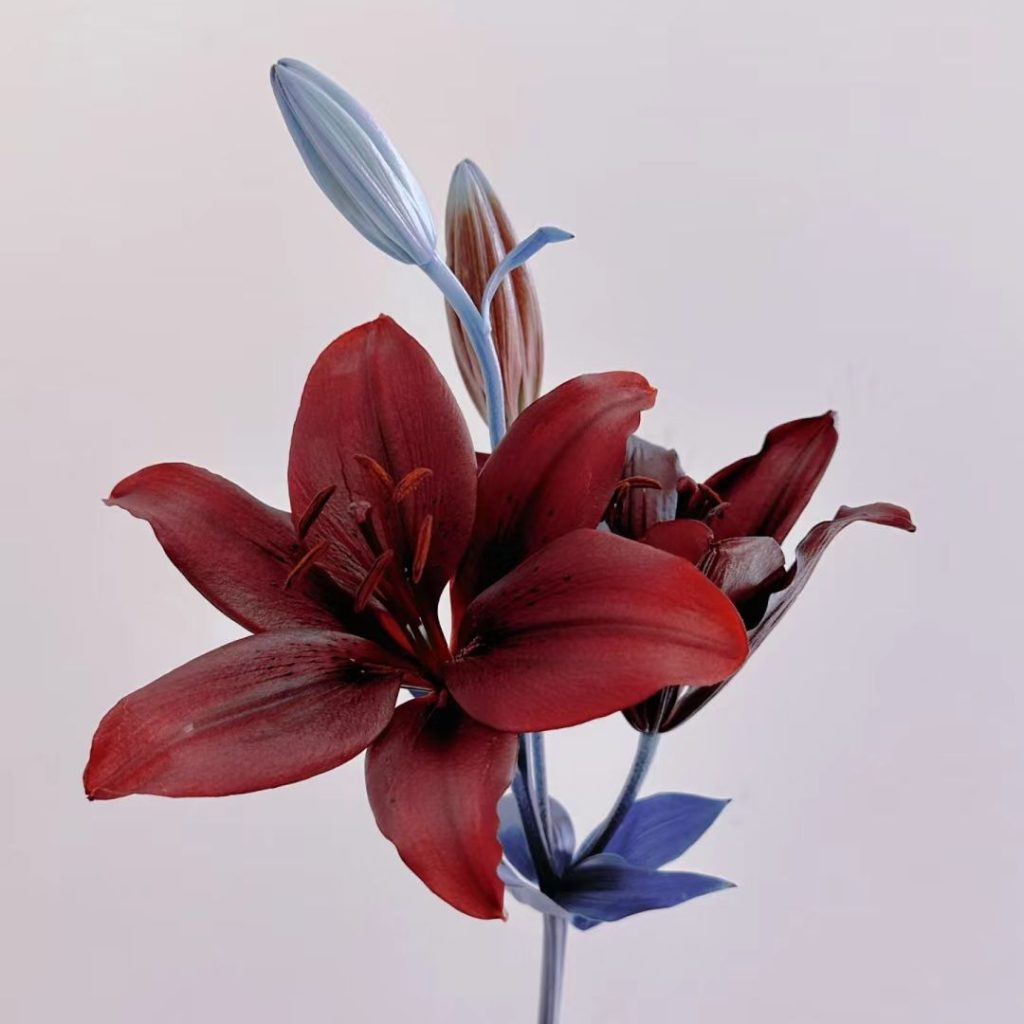
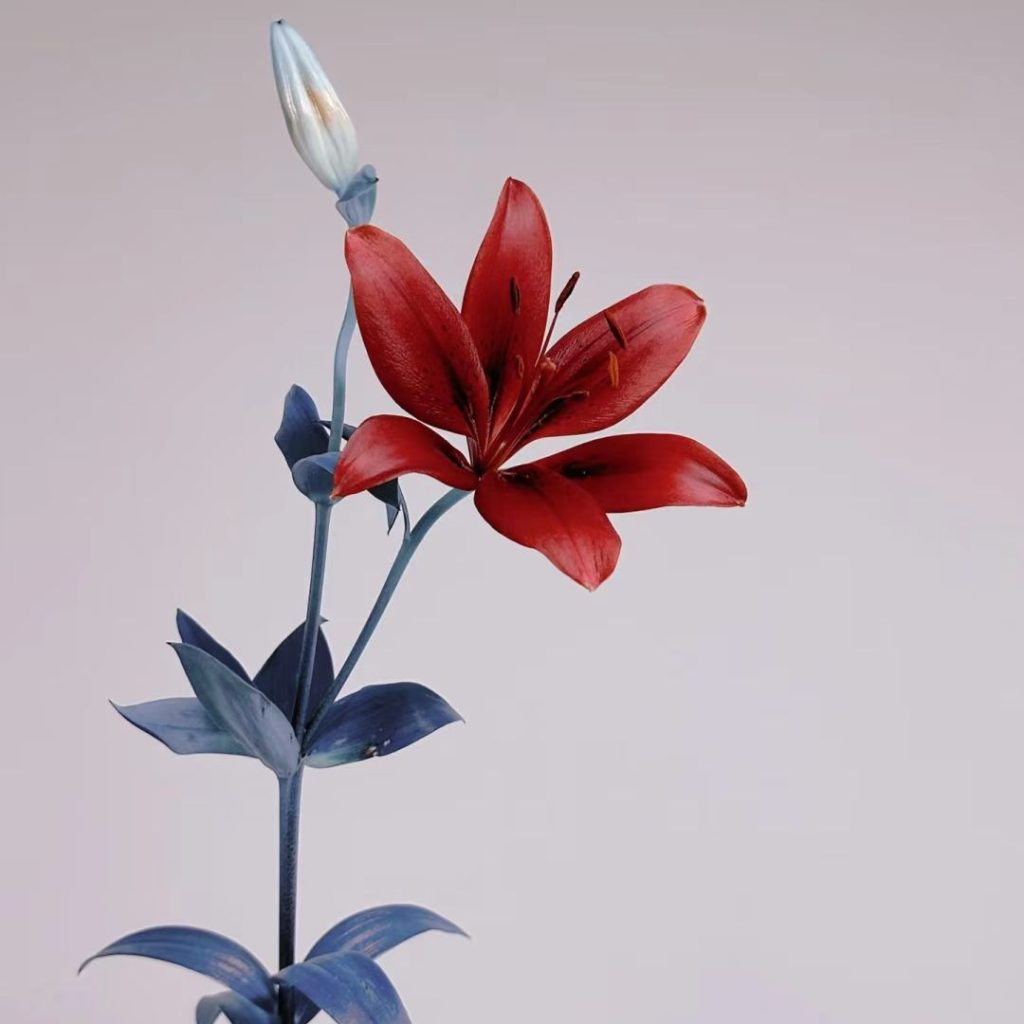
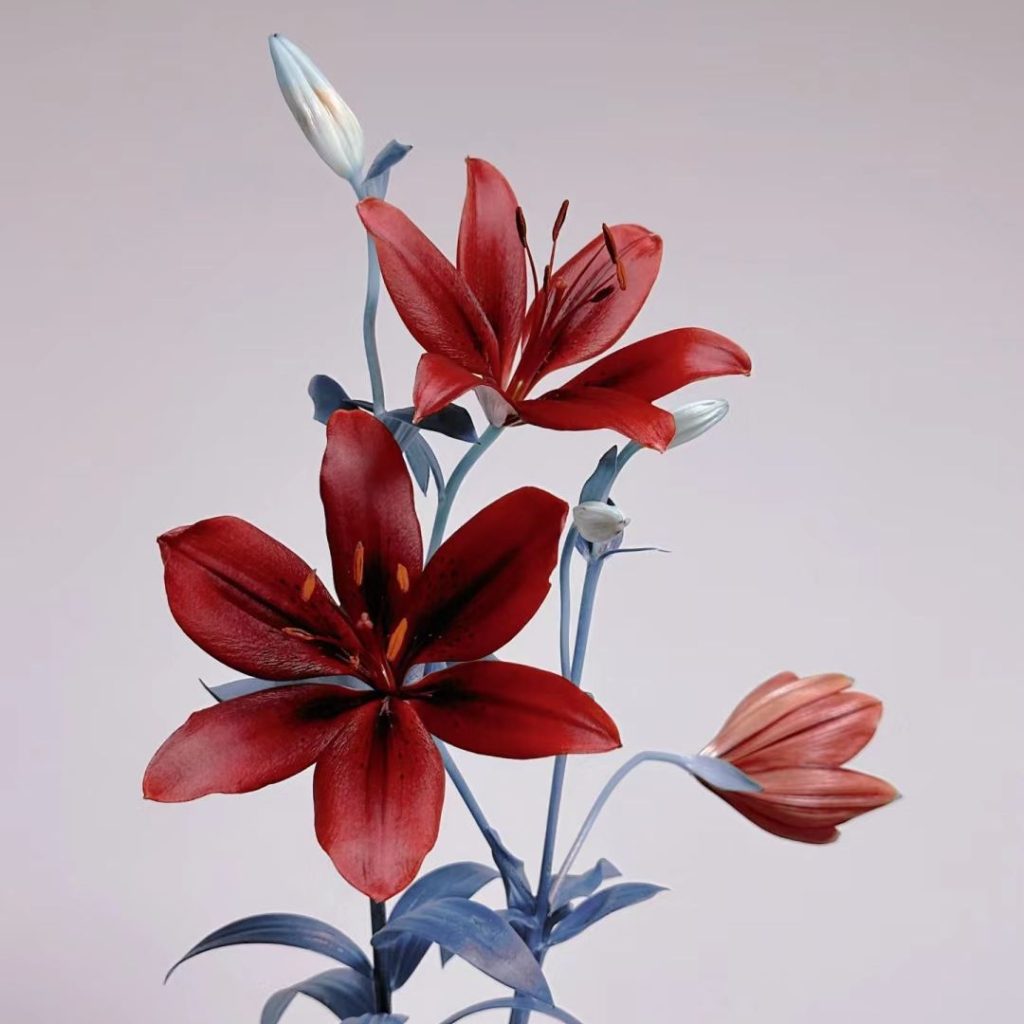
Deep Red Asiatic Lily: The Velvety Marvel of Summer Gardens
The deep red Asiatic lily (Lilium asiatica) stuns with its bold, upward-facing blooms featuring rich, almost black-red petals that shimmer like satin. Each stem produces 4-6 star-shaped flowers, 5-7 inches wide, with minimal fragrance—making them ideal for allergy-sensitive spaces. These hardy perennials grow 2-3 feet tall and thrive in full sun to partial shade, blooming from early to midsummer. Native to East Asia but widely hybridized, they adapt well to USDA zones 3-9. Their intense color deepens in cooler temperatures, creating a dramatic contrast against green foliage or pale companion flowers.
As a red flower, the deep red Asiatic lily symbolizes passion, ambition, and enduring love. Its upward-reaching blooms also represent pride and achievement, often gifted to celebrate milestones or convey admiration. In some cultures, its blood-red hue ties it to themes of rebirth and courage, while its lack of strong scent emphasizes sincerity—a love that’s bold yet unpretentious.
Asiatic lilies are edible! Their petals add a peppery kick to salads (remove pollen first). They’re also toxic to cats, so keep them out of reach of curious pets.
Perfect for borders or bouquets, pair this red flower with white roses or blue delphiniums for a patriotic or elegant contrast.
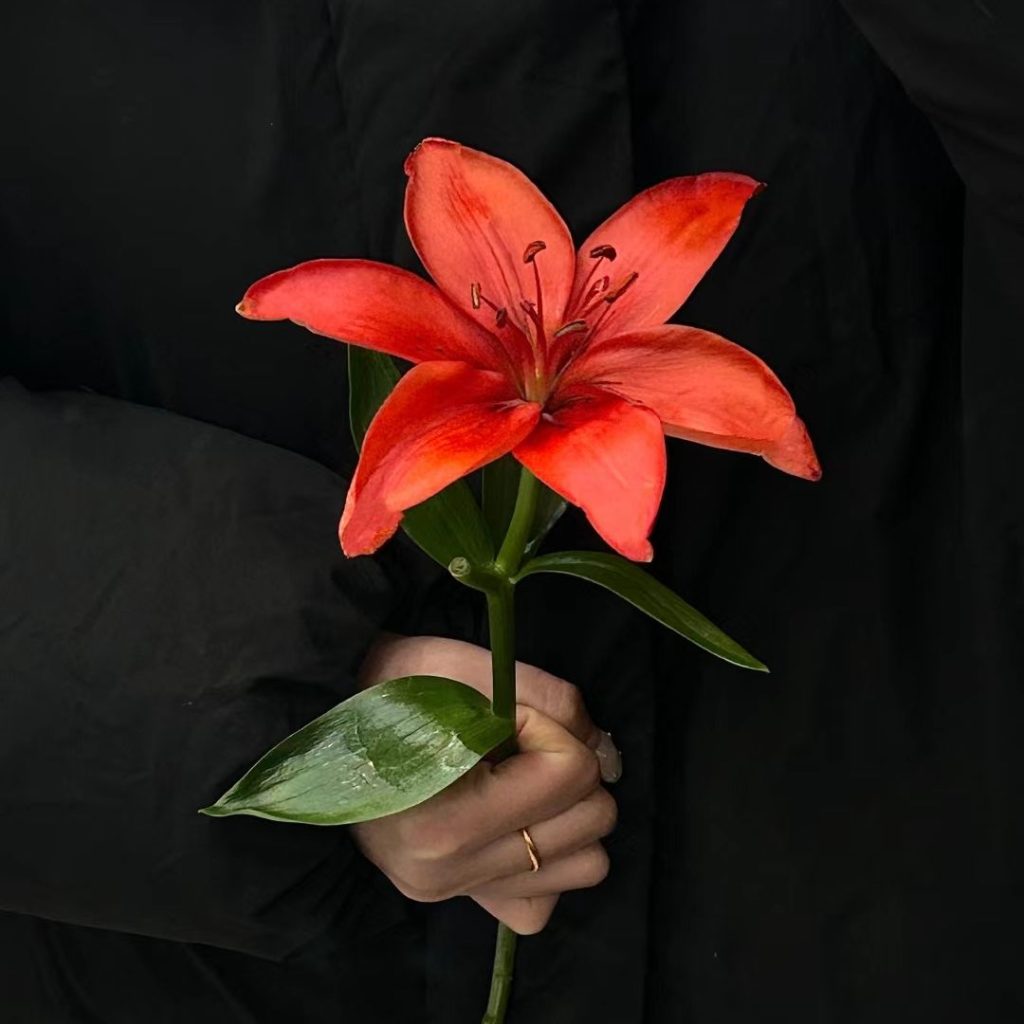

The Ruby Lily (a striking variety of Lilium asiatica or Lilium orientalis) captivates with its glossy, deep crimson petals that shimmer like polished gemstones. Each bloom, 6-8 inches wide, features bold upward-facing flowers with recurved petals, often speckled with delicate darker spots or golden streaks. This red flower grows 3-4 feet tall on sturdy stems, topped with 4-8 blooms per stalk. Unlike heavily fragrant Oriental lilies, Ruby Lilies offer a subtle, sweet scent, making them ideal for indoor arrangements. Native to hybrid origins, they thrive in USDA zones 4-9, blooming mid-to-late summer in full sun or light shade. Their vibrant color intensifies in cooler climates, and they’re drought-tolerant once established.
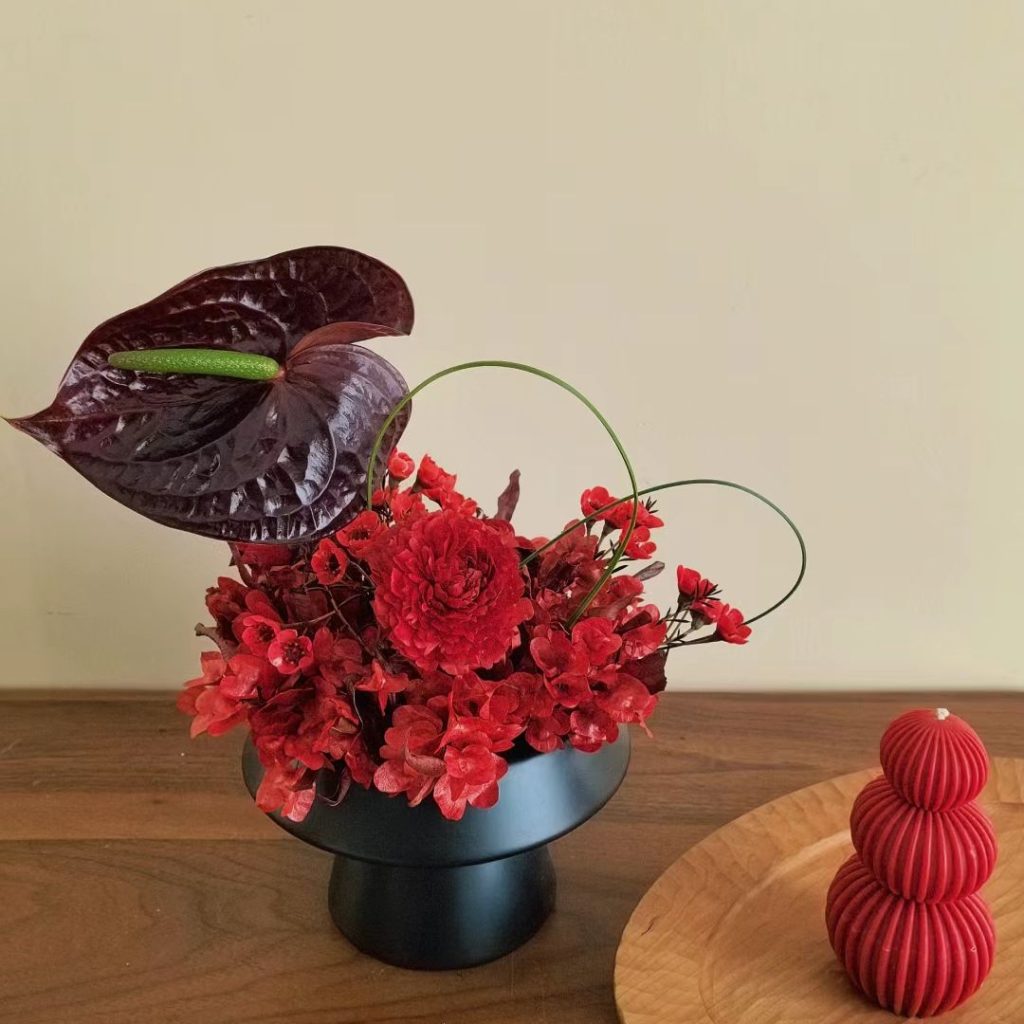
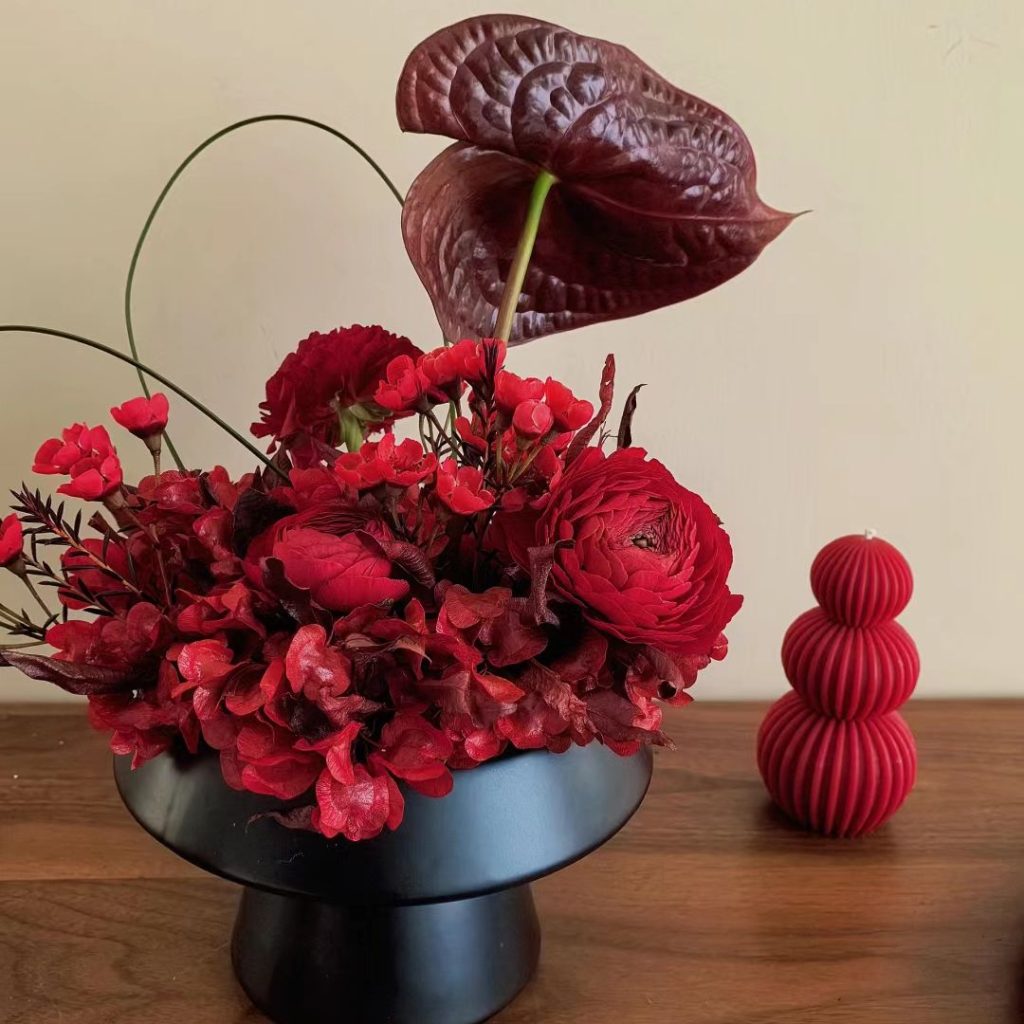
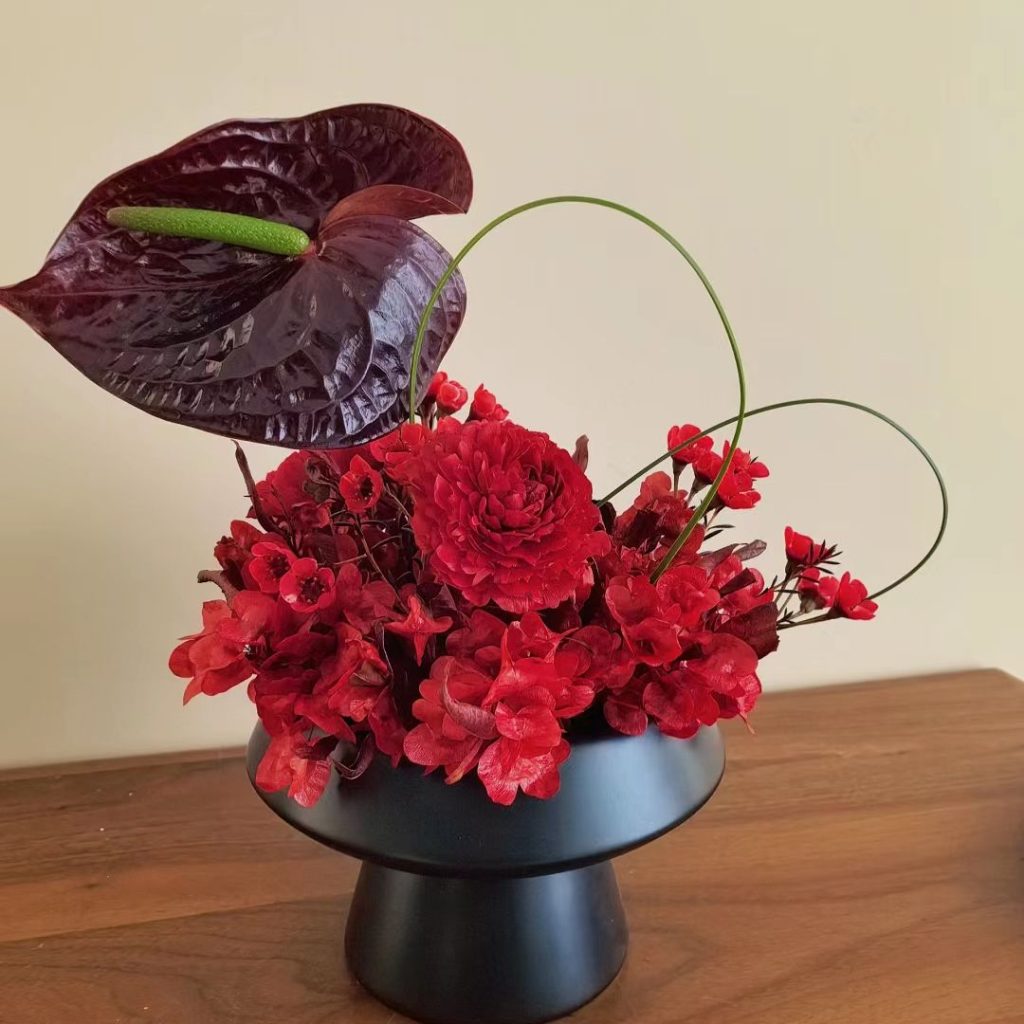
Vintage table red flower
This vintage table red flower arrangement exudes a blend of passion and romance, primarily through its dominant red color scheme. The deep red leaves and flowers contrast beautifully with the brighter red blooms, creating a visually striking and layered composition. The choice of large green foliage, possibly resembling turtle back bamboo, adds a modern touch with its unique shape and color, complementing the variety of red flowers in different shapes and sizes.
The black vase, simple yet elegant, provides a stark contrast to the vibrant flowers, emphasizing their beauty and contributing to the vintage aesthetic. The arrangement’s design, with its strategically placed flowers and leaves at varying heights, achieves a balance between order and playfulness, while the curving green branches inject a sense of movement and vitality. Additionally, the inclusion of red candles alongside the arrangement enhances the warmth and festive atmosphere, making this table flower a captivating blend of classic and contemporary artistry.



Amaryllis : The Showstopping Red Flower of Winter Elegance
The amaryllis, often called the “naked lady” for its leafless bloom stalks, stuns with large, trumpet-shaped flowers that burst open atop tall, sturdy stems (18-30 inches high). While available in various colors, the classic red flower variety dazzles with velvety crimson petals, sometimes edged in white or streaked with darker veins. Each bulb produces 2-5 blooms, spanning 6-10 inches wide, with glossy strap-like leaves emerging post-flowering. Native to South America, this tropical bulb thrives indoors or in USDA zones 8-10, blooming in winter—a vibrant rebel against the season’s gloom. Its low-maintenance nature (just water and indirect light!) makes it a holiday favorite.
The amaryllis symbolizes pride, radiant beauty, and determination, reflecting its bold stature and dramatic bloom cycle. As a red flower, it adds layers of passion, romantic devotion, and courage. Gifting a red amaryllis conveys admiration for someone’s strength or a message like, “Your brilliance lights up my world.” In Victorian times, it also represented success after hardship, as the bulb blooms spectacularly even after dormancy.
A single amaryllis bulb can rebloom for decades! Its hollow stems inspired the scientific name Hippeastrum (“knight’s star”), referencing medieval lance tips. Bonus: Pollinators adore it, but it’s toxic to pets—keep curious cats and dogs away.
Perfect for holiday decor or bold indoor displays, pair this red flower with evergreen branches or gold accents for festive flair.
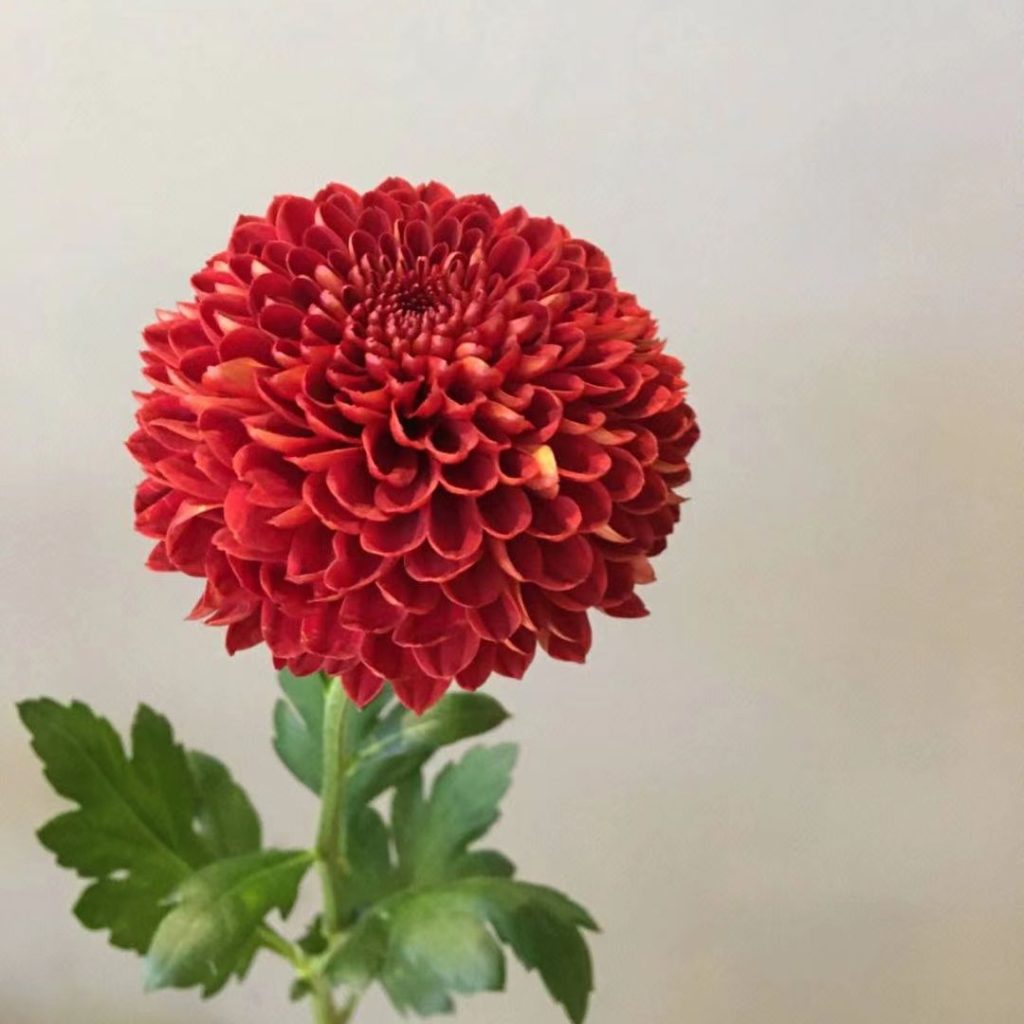
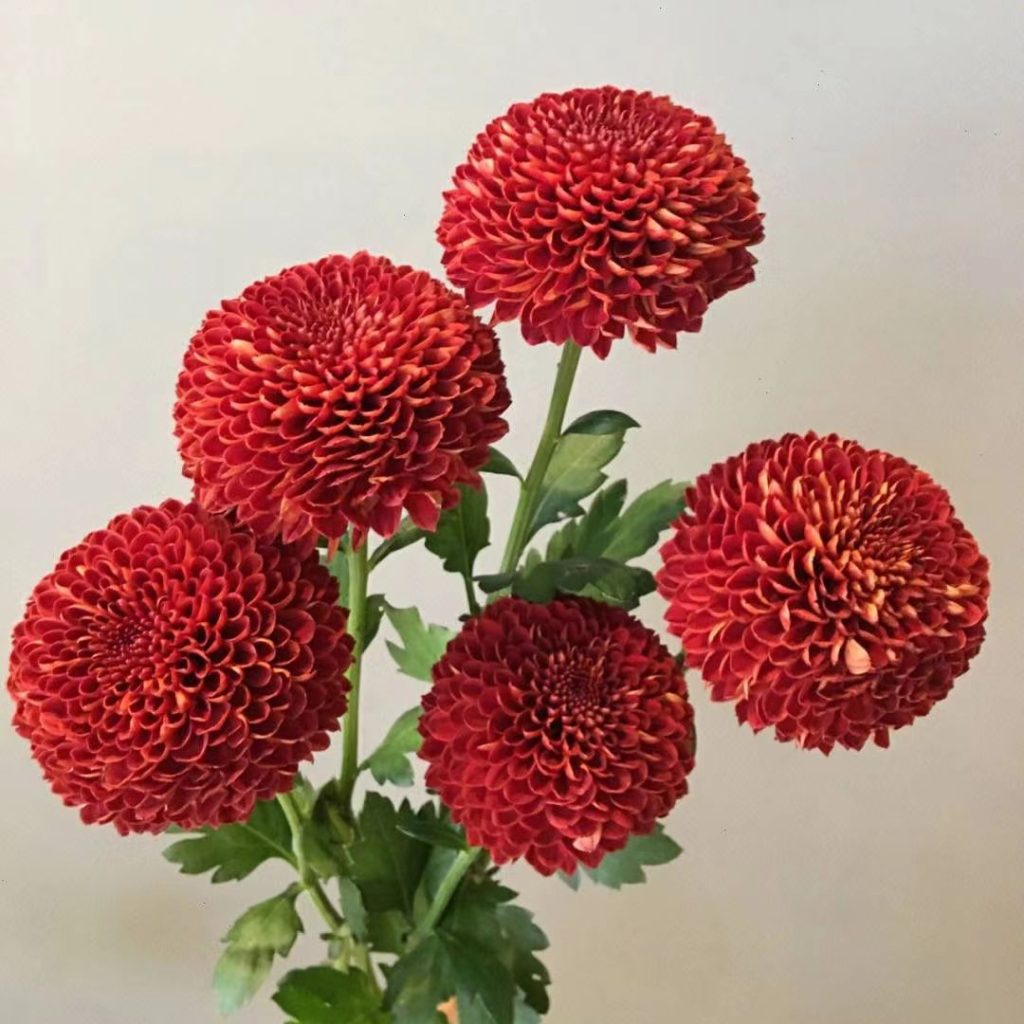
Red Ping Pong Chrysanthemum: The Playful Red Flower of Joy and Unity
The red ping pong chrysanthemum captivates with its perfectly spherical blooms, resembling fluffy crimson pom-poms or miniature table tennis balls (hence its name!). Each flower, 2-4 inches wide, features densely packed petals in a vibrant scarlet to burgundy hue, creating a velvety texture. This red flower grows on sturdy, upright stems (12-24 inches tall) with dark green, serrated leaves, making it ideal for both gardens and long-lasting cut arrangements. Native to East Asia but popular worldwide, it thrives in full sun and well-draining soil, blooming profusely from late summer to fall. Its compact shape and bold color add whimsy to autumn displays or festive decor.
As a red flower, the ping pong chrysanthemum radiates joy, celebration, and enduring affection. Its round form symbolizes harmony, unity, and completeness, often gifted to honor milestones like weddings or anniversaries. In floriography, red chrysanthemums also represent love that deepens over time, making them a heartfelt alternative to roses. Pair it with golden foliage or white daisies for a message of “happiness shared is happiness multiplied.”
Ping pong chrysanthemums are edible! Their mild, slightly bitter petals add a pop of color to salads or desserts. Bonus: They’re believed to bring good luck in Asian cultures and are a staple in Lunar New Year celebrations.
Perfect for fall bouquets or cheerful borders, this red flower thrives in USDA zones 5-9 and pairs beautifully with ornamental grasses or purple asters.
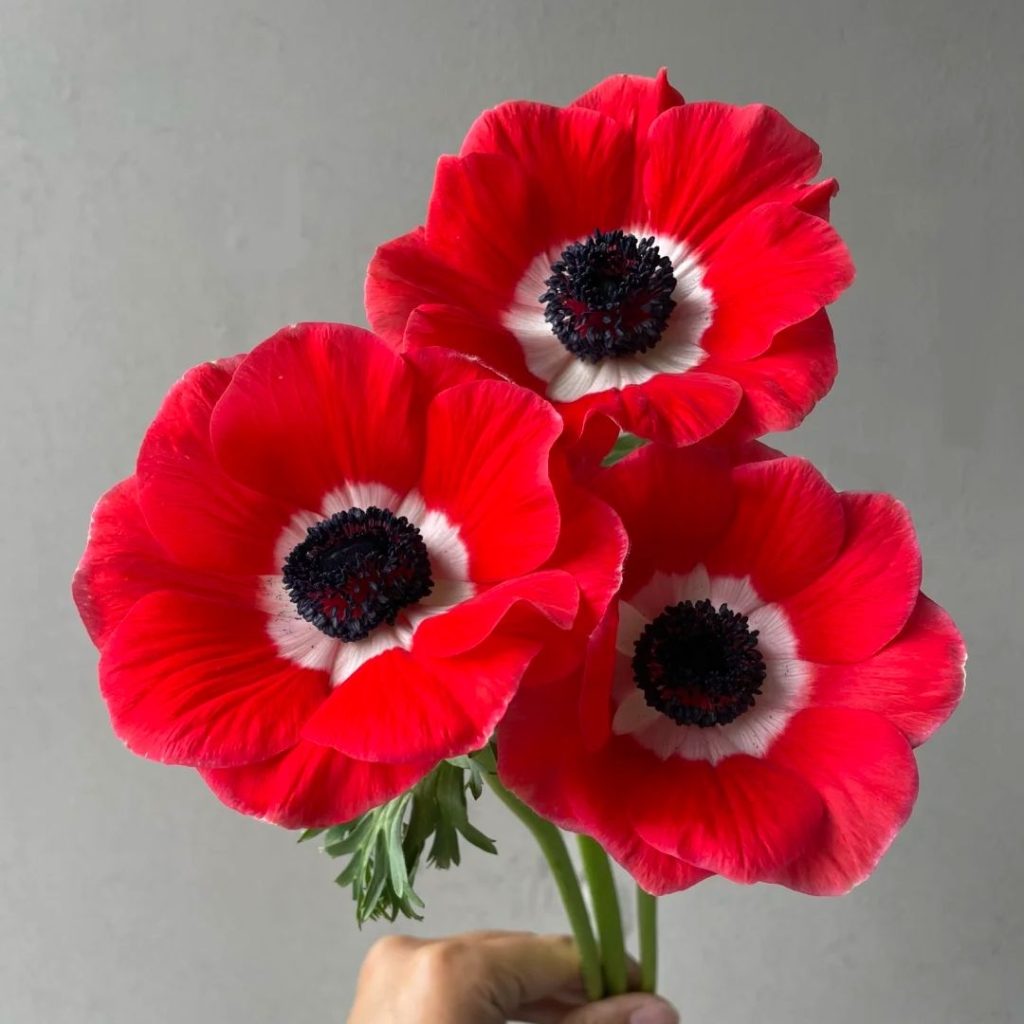
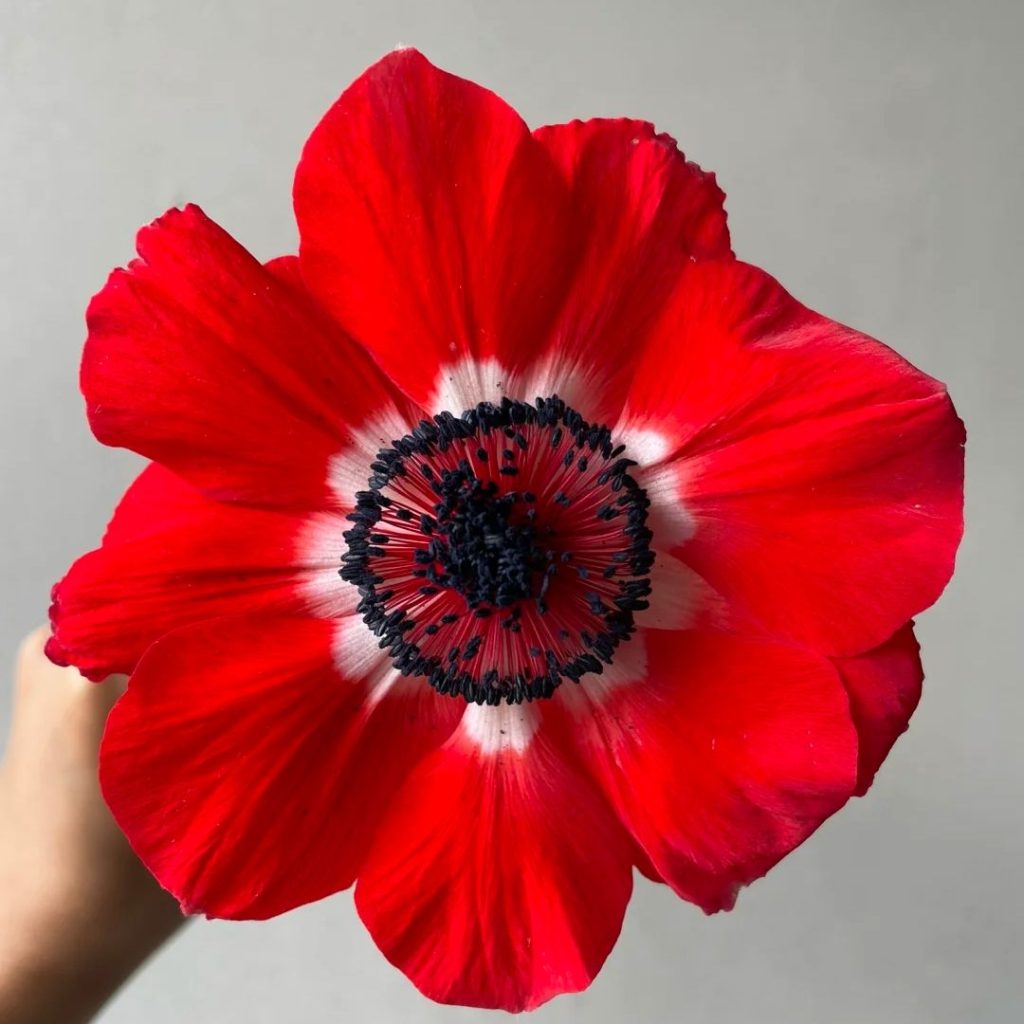

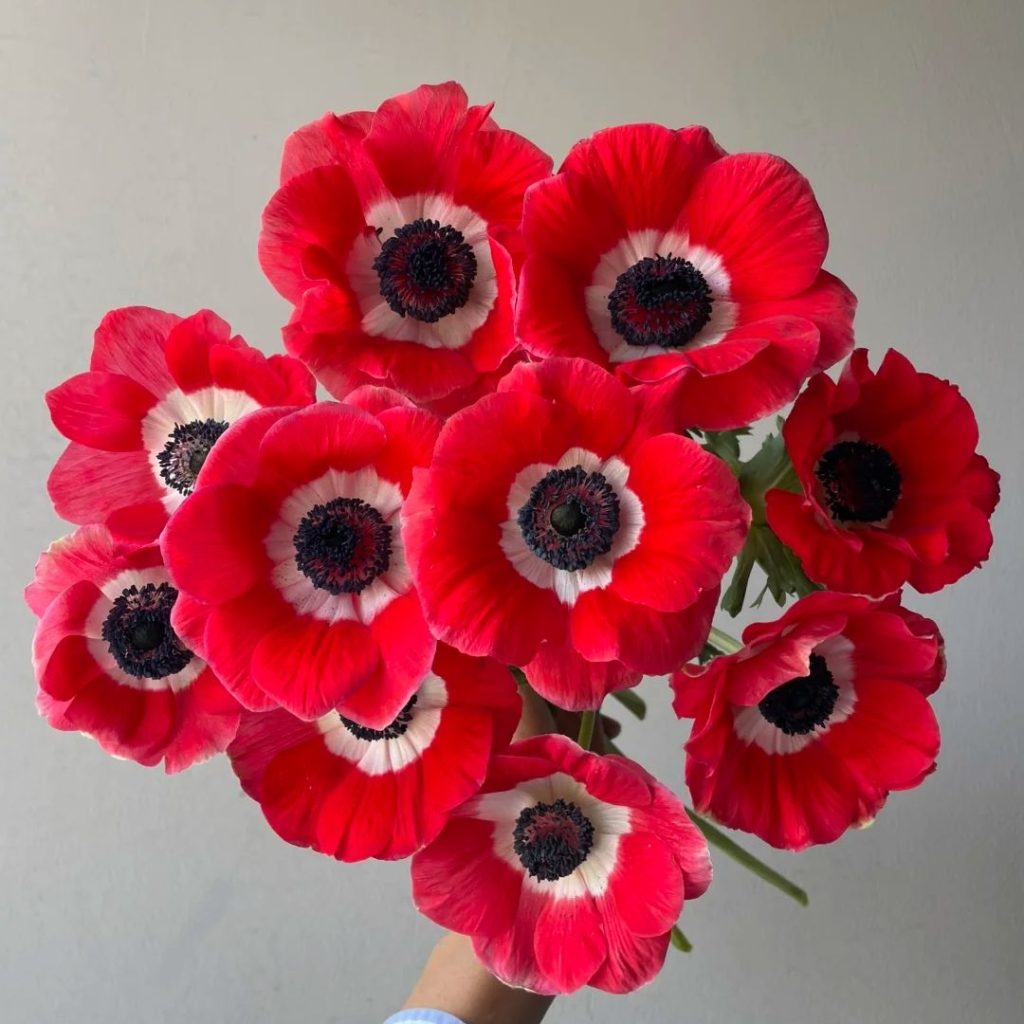
Red Anemone
The red anemone (Anemone coronaria), also known as the windflower, stuns with its bold, poppy-like blooms featuring velvety scarlet petals surrounding a dark, dramatic center. Each flower spans 2-3 inches wide, perched atop slender, fuzzy stems (8-12 inches tall) with delicate, fern-like foliage. Native to the Mediterranean, this red flower thrives in cool climates (USDA zones 7-10) and blooms in early spring, often alongside tulips and daffodils. Its vivid hue ranges from bright crimson to deep burgundy, with some varieties showcasing subtle black undertones for added drama. Drought-tolerant and low-maintenance, it’s a favorite for rock gardens or wildflower meadows.
The red anemone carries contrasting meanings rooted in ancient lore. Its name comes from the Greek anemos (“wind”), symbolizing fleeting beauty and fragility. Yet as a red flower, it also represents forsaken love, protection, and anticipation. In Greek mythology, red anemones sprang from the blood of Adonis, linking them to tragic passion and rebirth. Today, they’re gifted to convey admiration for someone’s resilience or a bittersweet farewell.
Anemones close their petals at night and reopen with sunlight, earning them the nickname “weather flowers.” Though toxic if ingested, they’re a magnet for pollinators like bees and butterflies.
Perfect for adding a pop of color to spring gardens, pair this red flower with white ranunculus or blue forget-me-nots for a mythic, poetic vibe.
MORE:Angel Wing Begonia


One reply on “38 Stunning red flowers: A Fiery Guide to Blooms That Steal the Spotlight”
[…] MORE:red flowers […]